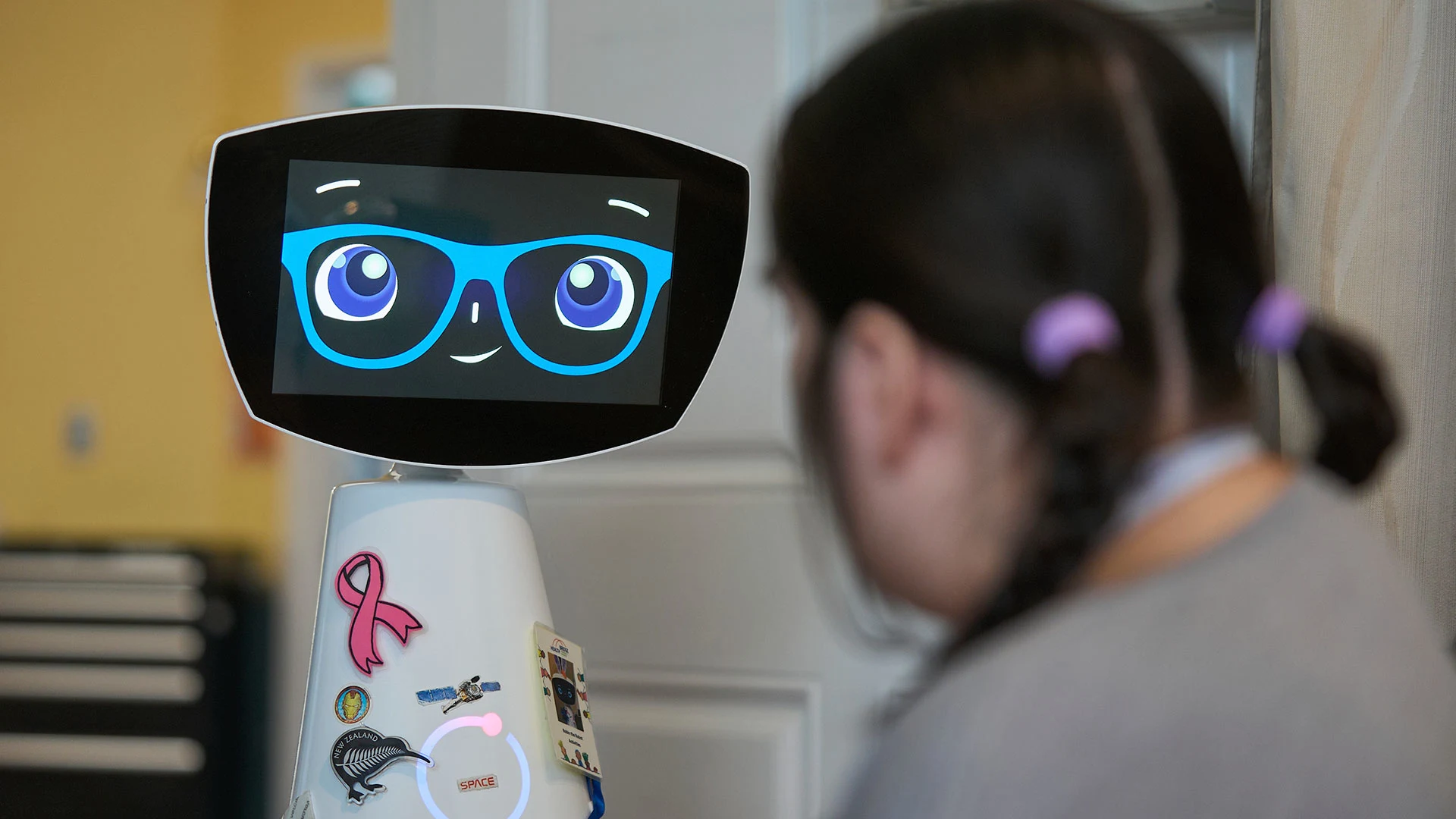
""Luca, how are you?" it asked in a high-pitched voice programmed to sound like a 7-year-old girl. "It's been awhile."Brazil-Sheehan said they had only met the 4-foot-tall (1.2-meter-tall) robot with a large screen displaying cartoonlike features once before after they were admitted several days earlier. "His face lit up," she said about the interaction in June in Worcester, Massachusetts. "It was so special because she remembered him.""
"While heralded by some for the efficiency it brings, others worry about its impact on patient care.Robin is about 30% autonomous, while a team of operators working remotely controls the rest under the watchful eyes of clinical staff. Khachikyan said that with each interaction, they're able to collect more data - while still complying with the Health Insurance Portability and Accountability Act, or HIPAA - and get closer to it being able to function independently."
Meagan Brazil-Sheehan's 6-year-old son Luca interacted with Robin, a 4-foot-tall therapeutic robot programmed to speak like a 7-year-old girl, which recognized and remembered him. Robin provides emotional support in nursing homes and pediatric hospital units to mitigate staffing shortages and engage patients. The robot has been deployed in about 30 U.S. health care facilities across several states five years after its U.S. launch. Robin operates at roughly 30% autonomy while remote operators control remaining functions under clinical supervision. Developers collect interaction data while maintaining HIPAA compliance, and opinions vary about AI's effects on patient care.
Read at Fast Company
Unable to calculate read time
Collection
[
|
...
]